When dealing with bed bugs, having the right vacuum cleaner can make all the difference in your battle against these persistent pests. While vacuuming alone won’t completely eliminate an infestation, it’s a crucial step in any comprehensive bed bug treatment plan. This guide will help you find the best vacuum for bed bugs and explain how to use it effectively.
Quick Picks: Best Vacuums for Bed Bugs

Editor’s Choice

Best Budget
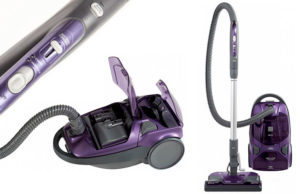
Best for Carpets

Best Mobility
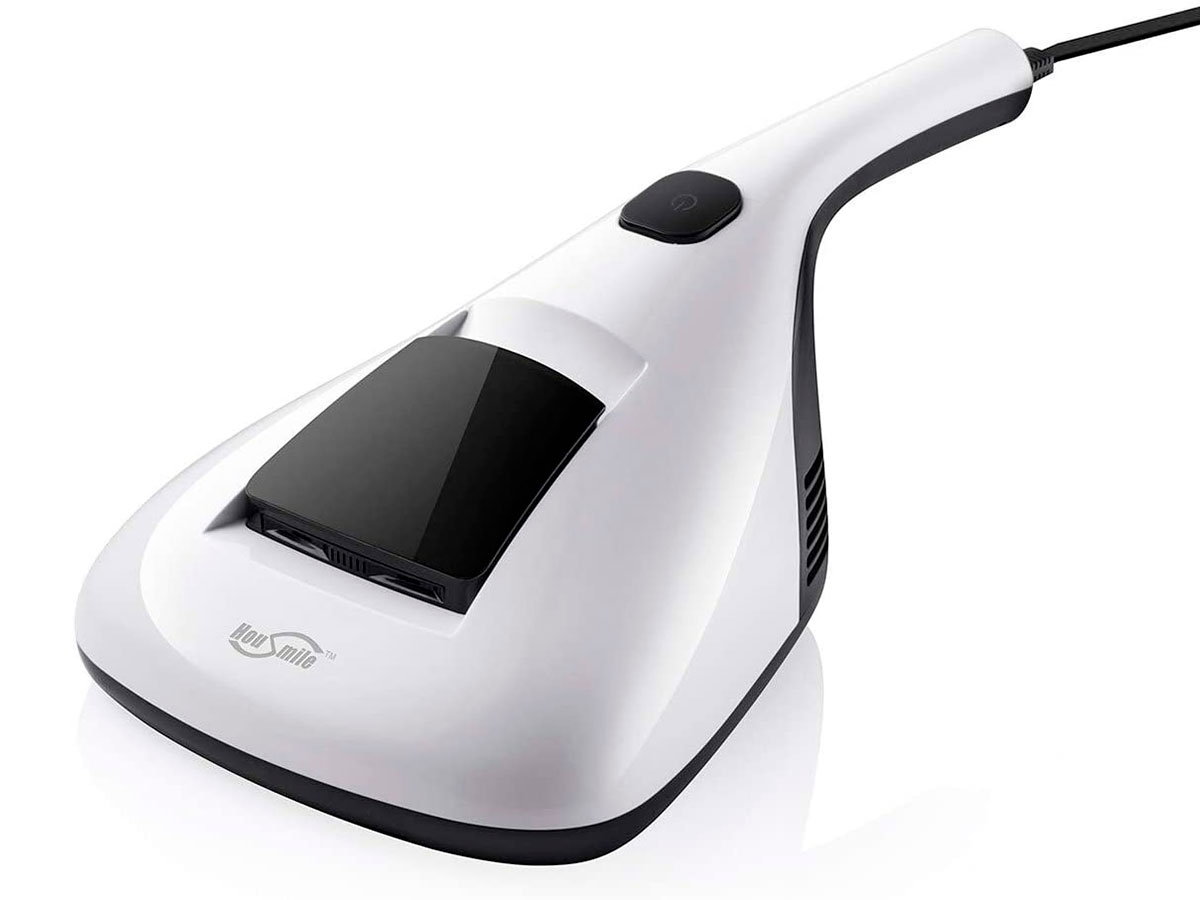
Best Handheld
Discovering bed bugs in your home can be a nightmare. These resilient pests multiply rapidly, hide in the tiniest crevices, and their bites leave irritating red welts on your skin. While many people immediately reach for chemical treatments, a high-quality vacuum cleaner is actually one of your most powerful first-response tools.
But not all vacuums are created equal when it comes to bed bug removal. The best vacuum for bed bugs needs specific features to effectively capture these pests and prevent them from escaping back into your home.
Why Use a Vacuum?
Vacuuming immediately reduces the bed bug population, removes eggs and waste, and reaches bugs hiding in crevices that sprays might miss.
Limitations
Vacuuming alone won’t completely eliminate an infestation, but it’s a crucial component of any effective bed bug treatment plan.
Key Features
The ideal bed bug vacuum offers powerful suction, HEPA filtration, specialized attachments, and proper containment systems. In addition to these features, it should be lightweight and easy to maneuver, enabling thorough cleaning in tight spaces where bed bugs often hide. To complement your vacuuming efforts, pairing it with the best bed bug mattress covers can provide an extra layer of protection, sealing off any remaining pests and preventing future infestations. Ultimately, a comprehensive approach will ensure that your home remains bed bug-free.
- Understanding Bed Bug Infestations
- Signs You Need a Bed Bug Vacuum
- Bed Bug Vacuum Comparison
- How to Choose a Bed Bug Vacuum
- 1. Shark Navigator Lift-Away Deluxe – Best Overall Vacuum for Bed Bugs
- 2. Atrix AHSC-1 Lil Red – Best Budget Canister Vacuum
- 3. Kenmore 600 Series – Best for Carpet Bed Bugs
- 4. Atrix ERGO – Best Backpack Vacuum
- 5. Housmile UV Light – Best Handheld Vacuum
- How to Vacuum for Bed Bugs Effectively
- Using Steam Cleaners for Bed Bugs
- Can Bed Bugs Survive in a Vacuum Cleaner?
- Conclusion: Choosing the Best Vacuum for Bed Bugs
- Frequently Asked Questions About Bed Bug Vacuums
Understanding Bed Bug Infestations
Bed bugs are persistent pests that can infiltrate even the cleanest homes. They multiply quickly and hide in tiny cracks and crevices throughout your living space, including mattresses, box springs, couches, and clothing piles. Their bites leave irritating red bumps on exposed skin, making them a serious nuisance.
While chemical treatments are effective, incorporating a good vacuum into your bed bug treatment strategy can significantly improve your results. Vacuuming helps remove visible bugs, eggs, and waste matter – an essential step in controlling your infestation.
Signs You Need a Bed Bug Vacuum
Wondering if it’s time to invest in a specialized vacuum for bed bugs? Look for these telltale signs that indicate vacuum treatment should be part of your bed bug control strategy:
When to Call a Professional
While vacuuming is an important part of bed bug control, consider professional pest management if you notice: widespread infestation across multiple rooms, continued presence despite DIY treatments, or if you have respiratory conditions that might be aggravated by extensive bed bug allergens.
A quality bed bug vacuum doesn’t just help remove visible bugs—it’s also essential for ongoing management, reducing allergens, and preventing reinfestation. Even after treatment, maintaining a regular vacuuming schedule with the right equipment helps ensure bed bugs don’t return.
Bed Bug Vacuum Comparison
| Model | Type | Suction Power | HEPA Filter | Weight | Cord Length | Best For | Price Range |
|---|---|---|---|---|---|---|---|
| Shark Navigator | Upright with detachable canister | 1200W / 58 CFM | Yes | 12.5 lbs | 25 ft | All-purpose, deep carpet cleaning | $$ |
| Atrix Lil Red | Canister | 1200W / 71 CFM | Yes | 6.5 lbs | 16.5 ft | Portability, spot treatments | $$ |
| Kenmore 600 Series | Bagged canister | 12A dual-motor / 67 CFM | Yes (triple) | 22.6 lbs | 28 ft | Carpets, large homes | $$$ |
| Atrix ERGO | Backpack | 1400W / 106 CFM | Yes | 10 lbs | 10 ft | Mobility, multi-room treatment | $$$ |
| Housmile UV | Handheld | 350W / 8.5KP | Yes | 4.7 lbs | 13 ft | Mattresses, upholstery | $ |
How to Choose a Bed Bug Vacuum
Suction Power
Look for a vacuum with at least 110 volts of power, though 120+ volts is preferable. Bed bugs can cling tightly to fabrics and surfaces, so strong suction is essential for effective removal.
HEPA Filtration
A HEPA filter traps tiny particles inside the vacuum, preventing bed bugs from escaping back into your home. This feature is crucial for effective control.
Attachments
Crevice tools and specialized attachments help you reach the tight spaces where bed bugs hide. The best bed bug vacuums include multiple accessories for versatile cleaning.
1. Shark Navigator Lift-Away Deluxe – Best Overall Vacuum for Bed Bugs
2. Atrix AHSC-1 Lil Red – Best Budget Canister Vacuum
Atrix Lil Red Canister HEPA Vacuum
Best BudgetHow Does It Work
How to Use
- Use the included 6-foot hose and telescopic extension wand to reach difficult areas
- Utilize the various attachments for different surfaces and crevices
- Replace the HEPA bag when full and dispose of it in a sealed plastic bag
- Clean the washable filters regularly for maximum performance
- Powerful 1200W motor with 71 CFM suction
- Three-stage HEPA filtration system
- Compact and portable at just 6.5 lbs
- Comes with multiple attachments for versatile cleaning
- Retractable 16.5-foot cord
- Can tip over during use
- Relatively noisy at 79 dB
- Some users report it feels less durable than premium models
3. Kenmore 600 Series – Best for Carpet Bed Bugs
Kenmore 600 Series Bagged Canister Vacuum
Best for CarpetsHow Does It Work
How to Use
- Use the aluminum telescoping wand to access difficult areas like under furniture
- The included bare floor tool, dusting brush, and crevice tool provide options for different surfaces
- Replace bags promptly and seal them before disposal
- Clean or replace filters according to the manufacturer's schedule
- Powerful 12-amp dual-motor system
- Triple HEPA filtration system
- Excellent for deep-cleaning carpets
- Telescoping wand extends to reach difficult areas
- Long 28-foot retractable cord
- Heavier than other options at 22.6 lbs
- Bulkier to maneuver in tight spaces
- Moderate noise level at 73 dB
4. Atrix ERGO – Best Backpack Vacuum
Atrix ERGO Backpack Vacuum
Best MobilityHow Does It Work
How to Use
- Adjust the backpack straps for comfortable wear
- Use the included attachments to clean mattresses, furniture, and carpets
- Focus on seams and crevices where bed bugs typically hide
- Empty the collection bag into a sealed plastic bag after use
- Clean or replace filters according to manufacturer guidelines
- Extremely powerful 1400W motor with 106 CFM
- Hands-free operation for better maneuverability
- Large 2-gallon capacity
- Includes multiple attachments for versatile cleaning
- Relatively quiet at 72 dB
- Can become uncomfortable during extended use
- Weighs 10 lbs when worn
- Relatively short 10-foot cord
- More difficult to use attachments on the go
5. Housmile UV Light – Best Handheld Vacuum
Housmile UV Light Vacuum Cleaner
Best HandheldHow Does It Work
How to Use
- Run the device slowly over mattress surfaces, paying special attention to seams and tufts
- Allow the UV light enough time to work effectively on each section
- Empty the collection chamber into a sealed plastic bag after each use
- Clean the filter regularly to maintain suction power
- Use monthly for prevention or more frequently during active infestations
- Combines vacuuming and UV light treatment
- Compact and easy to maneuver
- Specifically designed for bed bug treatment
- Relatively quiet at 70 dB
- 13-foot cord provides good reach
- Less powerful than full-sized vacuums at 350W
- Small 0.05-gallon collection capacity
- The 40°C temperature may not be sufficient to kill all bugs
- Corded design limits some mobility
How to Vacuum for Bed Bugs Effectively
Bed bugs are masters at hiding, so a methodical approach is essential for effectively vacuuming them. Follow these step-by-step instructions to maximize your success:
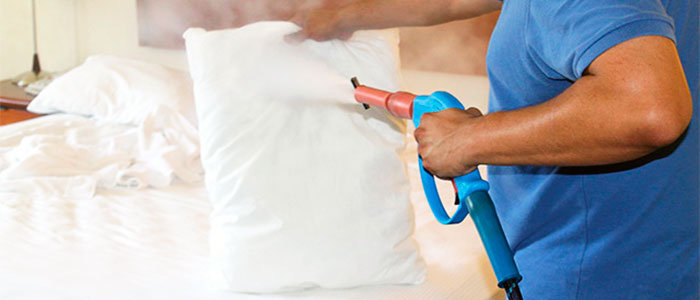
Vacuuming Technique Tips
- Mattress seams, piping, tags, and tufts
- Box spring frame and fabric covering
- Bed frame joints and crevices
- Upholstered furniture seams and cushions
- Baseboards and wall/floor junctions
- Carpet edges and under area rugs
- Nightstands and dressers (inside and behind)
- Electronics and appliances near sleeping areas
- Move slowly – approximately 1 inch per second
- Apply firm but gentle pressure to dislodge hiding bugs
- Use overlapping strokes in a systematic pattern
- Go over each area at least twice
- Work from the cleanest to most infested areas
- Maintain a consistent vacuuming schedule based on infestation severity
Recommended Vacuuming Schedule
- Active, severe infestation: Daily, focusing on sleeping areas
- Moderate infestation: Every other day
- Minor infestation: 2-3 times per week
- Post-treatment maintenance: Weekly for at least one month
- Prevention: Bi-weekly
Important Safety Warning: Never empty your vacuum indoors after collecting bed bugs. Bed bugs can survive the vacuuming process and escape back into your home. Always empty into a sealed plastic bag outdoors and dispose of immediately.
Using Steam Cleaners for Bed Bugs
While vacuuming removes bed bugs, steam cleaners can kill them through high heat. When shopping for a bed bug steamer, consider these important factors:
| Feature | Requirement | Why It Matters |
|---|---|---|
| Heat Level | 160-180°F (71-82°C) | This temperature range is lethal to bed bugs and their eggs |
| Moisture Output | Moderate steam without soaking | Too much moisture can damage furniture and cause mold |
| Penetration Depth | ¾” into surfaces, 2″ into crevices | Reaches bugs hiding inside mattresses and furniture |
Safety Warning
Steam cleaners produce temperatures around 200°F (93°C), which can cause serious burns. Always keep the steamer pointed away from your face, other people, and pets. Follow manufacturer safety guidelines carefully.
Can Bed Bugs Survive in a Vacuum Cleaner?
Yes, bed bugs can survive being vacuumed and potentially escape back into your home. To prevent this, take these precautions:
For Bagged Vacuums
- Immediately seal the vacuum bag opening with tape after use
- Place the sealed bag inside a large ziplock bag
- Dispose of this double-sealed package in an outdoor trash can
For Bagless Vacuums
- Empty the canister directly into a garbage bag outdoors
- Immediately seal the garbage bag
- Wash the vacuum canister in hot, soapy water
Using a vacuum with HEPA filtration provides an additional barrier to prevent bed bugs from escaping through the exhaust system.
Conclusion: Choosing the Best Vacuum for Bed Bugs
After thorough research and comparison, the Shark Navigator Lift-Away Deluxe earns our top recommendation for bed bug removal. Its combination of powerful suction, HEPA filtration, and versatile design makes it ideal for comprehensive bed bug treatment. The detachable canister allows for effective cleaning of mattresses, furniture, and other infested areas.
Remember that vacuuming is just one component of an effective bed bug treatment plan. For best results, combine vacuuming with other methods such as heat treatment, appropriate insecticides, and preventative measures. With persistence and the right tools, you can successfully eliminate bed bugs from your home.
Frequently Asked Questions About Bed Bug Vacuums
Can vacuuming alone eliminate a bed bug infestation?
No, vacuuming alone typically cannot eliminate an entire bed bug infestation. While vacuuming is effective at removing visible bugs, eggs, and waste matter, it usually can’t reach all the hiding places where bed bugs live. For complete elimination, vacuuming should be part of a comprehensive treatment plan that may include heat treatment, insecticides, encasements, and professional pest control services.
How often should I vacuum when dealing with bed bugs?
During an active infestation, you should vacuum daily, focusing on sleeping areas, furniture, baseboards, and carpet edges. After the infestation appears to be under control, continue vacuuming 2-3 times weekly for at least two more weeks. For prevention in high-risk situations, weekly vacuuming is recommended as part of your regular cleaning routine.
Can I use my regular household vacuum for bed bugs?
While you can use a regular household vacuum, it’s not ideal unless it has strong suction power and HEPA filtration. Standard vacuums may allow bed bugs to escape through the exhaust or survive inside the collection chamber. If using a regular vacuum, immediately dispose of the contents in a sealed plastic bag outside your home, and clean the vacuum thoroughly afterward.
Do I need a vacuum with HEPA filtration for bed bugs?
HEPA filtration is highly recommended when vacuuming for bed bugs. These filters trap tiny particles and prevent bed bugs from escaping through the exhaust system back into your home. HEPA filters also capture bed bug allergens and waste particles, which can trigger allergic reactions in sensitive individuals. For best results, choose a vacuum with sealed HEPA filtration.
How do I safely empty a vacuum after cleaning bed bugs?
For bagged vacuums: Immediately seal the bag opening with tape, place it in a plastic ziplock bag, seal it, and dispose of it in an outdoor trash container. For bagless vacuums: Take the vacuum outside, empty the contents directly into a plastic bag, immediately seal the bag, dispose of it, then wash the collection container with hot, soapy water. Always wear gloves during this process.
Can bed bugs crawl out of vacuums?
Yes, bed bugs can survive being vacuumed and potentially crawl back out unless proper precautions are taken. They are resilient creatures that can withstand the journey through vacuum hoses. To prevent escape, use a vacuum with HEPA filtration, empty it immediately after use, and dispose of the contents properly in sealed bags. Some users add diatomaceous earth to the collection chamber as an extra precaution.
What vacuum attachments work best for bed bug removal?
The most effective attachments for bed bug removal include: crevice tools for seams, tufts, and tight spaces; upholstery tools for mattress surfaces and fabric furniture; stiff brush attachments to agitate bugs hiding in carpet fibers; and extension wands for reaching difficult areas. Avoid using beater bars directly on mattresses as they may damage the fabric.
How does a UV vacuum work against bed bugs?
UV vacuums like the Housmile model use a multi-step approach: first, the vibrating motor and rotating brush dislodge bed bugs from fabrics; next, the UV light exposes and potentially kills bugs through heat; finally, the suction pulls them into the collection chamber. While the UV light may help identify some bugs, its primary benefit is the combined mechanical action with traditional vacuum suction. UV light alone is not a reliable killing method for bed bugs.
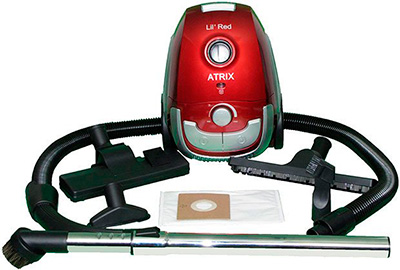


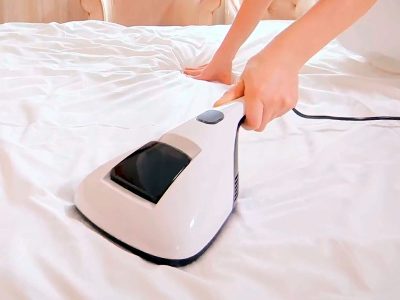
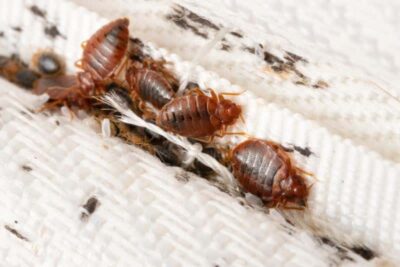



What brand is better Bissell or Hoover?